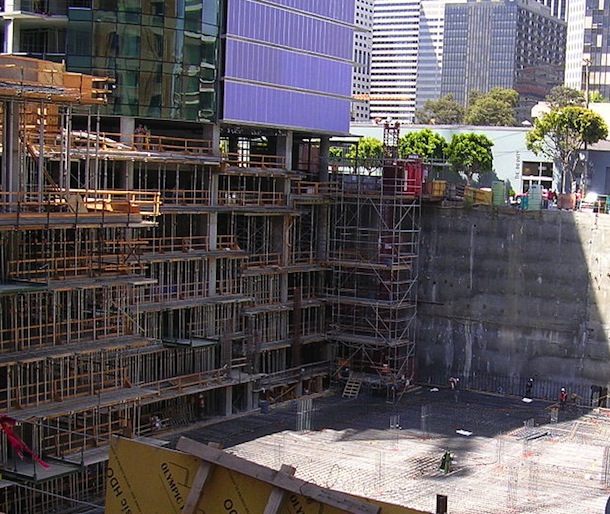Engineering and construction CEOs are more optimistic this year than in previous years, according to PwC’s 2014 Global CEO Survey. Forty-one percent of respondents expect to grow over the next 12 months, up from 31% last year.
This and other big-picture facts are available in the survey, which provides multiple “snapshots” of the engineering and construction sectors, including growth markets, government impact on the industry, transformative global trends, and concerns about sustainability and climate trends.
Here are some of the snapshots we found the most interesting (read the full report):
- 50% of CEOs in the engineering and construction sector believe the global economy will improve over the next 12 months; 9% believe it will decline
- 78% of sector CEOs are concerned about how governments will respond to deficit and debt in the next year—this is the concern that the highest number of engineering and construction CEOs reported worrying about
- 76% of sector CEOs are worried about high and volatile raw material prices
- Concerns about infrastructure gaps are a consistent concern—47% of sector CEOs reported concerns that inadequacy of infrastructure could hurt growth, 50% think that infrastructure think it should be one of their government’s top 3 priorities, and 41% feel that the government is ineffective (as opposed to 33% who believe that the government is effective)
- The U.S. topped the list of growth markets, and the Middle East ranked much higher as growth markets for engineering and construction CEOs than for other sectors
- Cost reduction heads the list of restructuring activities
- 69% of sector CEOs believe that technological advances such as the digital economy, Big Data, and social media will be the biggest transformative trend for their businesses in the next year
- E&C CEOs are significantly more worried about the availability of key skills in their workforces than are other industries.
- 89% of E&C CEOs say it’s important for their company to try and reduce their environmental footprint.
- 59% of E&C CEOs believe that resource scarcity and climate change will transform their business
For more, read the full report.
Related Stories
| Dec 17, 2010
How to Win More University Projects
University architects representing four prominent institutions of higher learning tell how your firm can get the inside track on major projects.
| Dec 13, 2010
Energy efficiency No. 1 priority for commercial office tenants
Green building initiatives are a key influencer when tenants decide to sign a commercial real estate lease, according to a survey by GE Capital Real Estate. The survey, which was conducted over the past year and included more than 2,220 office tenants in the U.S., Canada, France, Germany, Sweden, the UK, Spain, and Japan, shows that energy efficiency remains the No. 1 priority in most countries. Also ranking near the top: waste reduction programs and indoor air.
| Dec 7, 2010
Are green building RFPs more important than contracts?
The Request for Proposal (RFP) process is key to managing a successful LEED project, according to Green Building Law Update. While most people think a contract is the key element to a successful construction project, successfully managing a LEED project requires a clear RFP that addresses many of the problems that can lead to litigation.
| Dec 7, 2010
Blue is the future of green design
Blue design creates places that are not just neutral, but actually add back to the world and is the future of sustainable design and architecture, according to an interview with Paul Eagle, managing director of Perkins+Will, New York; and Janice Barnes, principal at the firm and global discipline leader for planning and strategies.
| Dec 7, 2010
Green building thrives in shaky economy
Green building’s momentum hasn’t been stopped by the economic recession and will keep speeding through the recovery, while at the same time building owners are looking to go green more for economic reasons than environmental ones. Green building has grown 50% in the past two years; total construction starts have shrunk 26% over the same time period, according to “Green Outlook 2011” report. The green-building sector is expected to nearly triple by 2015, representing as much as $145 billion in new construction activity.
| Dec 7, 2010
USGBC: Wood-certification benchmarks fail to pass
The proposed Forest Certification Benchmark to determine when wood-certification groups would have their certification qualify for points in the LEED rating systemdid not pass the USGBC member ballot. As a result, the Certified Wood credit in LEED will remain as it is currently written. To date, only wood certified by the Forest Stewardship Council qualifies for a point in the LEED, while other organizations, such as the Sustainable Forestry Initiative, the Canadian Standards Association, and the American Tree Farm System, are excluded.
| Dec 7, 2010
Prospects for multifamily sector improve greatly
The multifamily sector is showing signs of a real recovery, with nearly 22,000 new apartment units delivered to the market. Net absorption in the third quarter surged by 94,000 units, dropping the national vacancy rate from 7.8% to 7.1%, one of the largest quarterly drops on record, and rents increased for the second quarter in a row.
| Dec 7, 2010
Hot rumor: Norman Foster designing Apple’s new campus
Lord Norman Foster, reportedly has been selected to design Apple’s new campus in Cupertino, Calif. If the news is true, Foster is a good match for Apple say experts. Foster built his celebrity by marrying big gestures to technological wizardry. And, unlike some starchitects, he has glommed onto the environmental revolution—something Apple has made a point of embracing, too.
| Dec 7, 2010
10 megacities of the near future
With Beijing, Shanghai, and Mumbai already on the global radar, where can the next wave of construction be found? Far beyond China, India, and even Brazil it’s predicted. The world’s next future megacities could include Istanbul, Turkey; Ho Chi Minh City, Vietnam; and Khartoum, Sudan, among others. Read about these emerging and little-known behemoths.









